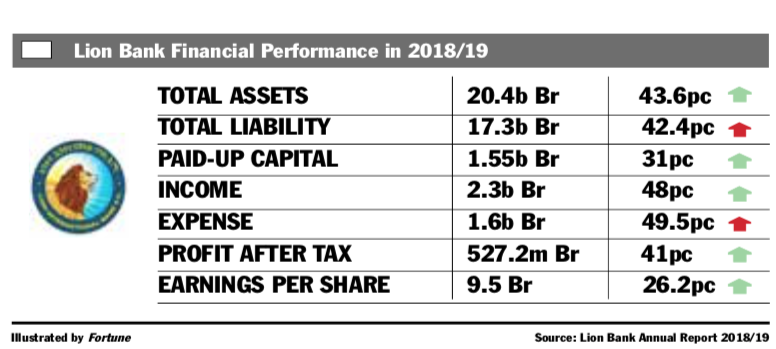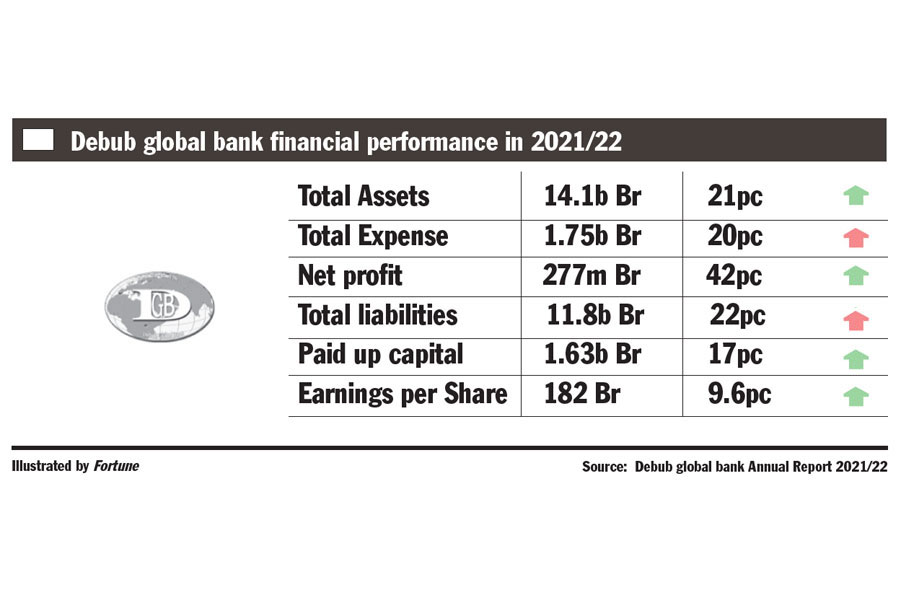
Fortune News | Feb 29,2020
Central bank Governor Yinager Dessie's (PhD) decision to slash reserve requirements for the commercial banks by half has stoked fear that a lending spree fuels inflation.
Commercial banks must hold five percent of their net deposits as reserves with the National Bank of Ethiopia (NBE) and maintain a monthly average reserve-to-deposit ratio of seven percent. The Governor has ordered the banks to submit weekly and monthly reports on their deposits and reserve balances to the central bank's supervision directorate.
It is barely a year since the central bank doubled the reserve ratio to 10pc. Governor Yinager also directed banks keep liquid assets of at least 15pc of net liabilities. He hopes cutting the reserve requirement by half would ease the banking industry's liquidity problem. The policy in reserve gear will likely free up over 80 billion Br for the banking system to make credit available.
Finance Minister Ahmed Shide told Parliamentarians two weeks ago that although deposit mobilisation efforts have improved, the volume of Birr outside the banks is growing. An estimated 133.6 billion Br was circulating outside the banking system by the end of the last financial year. However, regulators fall short of admitting a liquidity crisis shadowing the banking industry.
“There is no liquidity crunch in the banking system,” Solomon Desta, a vice governor of the central bank in charge of supervising financial institutions, told Fortune.
Experts contend otherwise.
Abdulmenan Mohammed, an accounts manager at the London-based Portbello Group Ltd, who has been keeping a keen eye on the Ethiopian financial sector, sees no other reason to force the central bank to halve the reserve requirement.
“There's a severe liquidity problem in the banking industry due to a significant expansion of credits,” he said.
The figures back Abdulmenan's observation.
The loan-to-deposit ratio is among the primary indicators that measure the banking industry's health. By the end of March this year, the average ratio of 16 private banks (excluding ZamZam and Hijra) hovered around 87pc, three percentage points higher than eight months ago. It is not far short of the 90pc ceiling advised by experts.
Industry players say a shortage of deposits over the past half-year has made it challenging to process loan applications that involve large projects. The dip in liquidity was evident beginning last December. Since then, almost all the banks have seen their loan-to-deposit ratios stagnate, if not erode.
Awash Bank leads the industry (excluding the state-owned Commercial Bank of Ethiopia) in deposits, having mobilised 122 billion Br by March this year. Its outstanding loans and advances were also the highest of the private banks at 111.5 billion Br. Its ratio stood at 90pc.
“We've been facing a liquidity crunch recently,” said Desalege Tolera, chief credit analyst at Awash. “The latest move will improve our position for credit disbursement.”
Dashen Bank, one of the big four private banks, carried a 91pc ratio, while the Bank of Abyssinia registered an 82pc ratio, the lowest among private banks.
Although liquidity issues are not new to the industry, bank executives say the effects are more severe this time, worsened by growing demand for credit from war-affected areas.
Solomon has observed this as well.
“The intent of reducing the reserve requirement is to boost banks’ ability and reach businesses affected by the conflict," he said.
The armed conflict in the country's north has been a thorn in the side of banks for over a year and a half. Close to 600 bank branches in the Tigray Regional State remain inaccessible. Wegagen and Loin banks have been hit hard than most. Both have a significant presence in Tigray – Wegagen operates over a quarter of its branches in the regional state, while the figure is nearly half for Lion International Bank. Wegagen, which celebrated its silver jubilee last week, saw its net profits drop by 85pc to 126 million Br last year. Lion fared a little better, though the 334.5 million Br it had netted was little more than half the profits it had the year before.
The latest data reveals that both banks have seen their loan-to-deposit ratios surpass the 90pc mark.
Genene Ruga, president of Nib International Bank, argues the ratio does not necessarily reflect the real picture as it fluctuates often. His Bank's ratio stood at 84pc in March but dropped four percentage points since, the President disclosed. However, he agrees that the central bank's latest decision will help ease liquidity problems.
"We're willing to disburse loans to conflict-stricken areas as long as applicants present feasible proposals,” he told Fortune.
Nib Bank operates 339 branches; eight in Tigray Regional State remain closed. Branches in the conflict-affected Amhara and Afar regional states remain operational.
Experts observe that although the injection of such a massive amount of money into the banking system can go a long way in addressing liquidity issues, the move will inevitably add to the inflationary pressure.
It was the kind of thinking that had led the central bank to double reserve requirements in August last year. The year-on-year headline inflation that had forced Governor Yinager to double the reserve ratio was 26.4pc last year. It was 36.6pc last month. Economics pundits warn that the central bank's move last week will fuel the inflationary fire.
"Inflation will worsen unless the newly-injected money is pulled out of the economy quickly," cautions Arega Shumite (PhD), a senior researcher at the Ethiopian Economics Association.
PUBLISHED ON
Jun 18,2022 [ VOL
23 , NO
1155]

Fortune News | Feb 29,2020

Fortune News | Feb 22,2019

Radar | Nov 13,2021

Radar | Nov 02,2025

Commentaries | Apr 22,2022

Radar | May 14,2022

Radar | Apr 30,2022

Fortune News | Apr 15,2023

Radar | Jun 29,2025

Fortune News | Feb 15,2020

Dec 22 , 2024 . By TIZITA SHEWAFERAW
Charged with transforming colossal state-owned enterprises into modern and competitiv...

Aug 18 , 2024 . By AKSAH ITALO
Although predictable Yonas Zerihun's job in the ride-hailing service is not immune to...

Jul 28 , 2024 . By TIZITA SHEWAFERAW
Unhabitual, perhaps too many, Samuel Gebreyohannes, 38, used to occasionally enjoy a couple of beers at breakfast. However, he recently swit...

Jul 13 , 2024 . By AKSAH ITALO
Investors who rely on tractors, trucks, and field vehicles for commuting, transporting commodities, and f...

Nov 1 , 2025
The National Bank of Ethiopia (NBE) issued a statement two weeks ago that appeared to...

Oct 25 , 2025
The regulatory machinery is on overdrive. In only two years, no fewer than 35 new pro...

Oct 18 , 2025
The political establishment, notably the ruling party and its top brass, has become p...

Oct 11 , 2025
Ladislas Farago, a roving Associated Press (AP) correspondent, arrived in Ethiopia in...